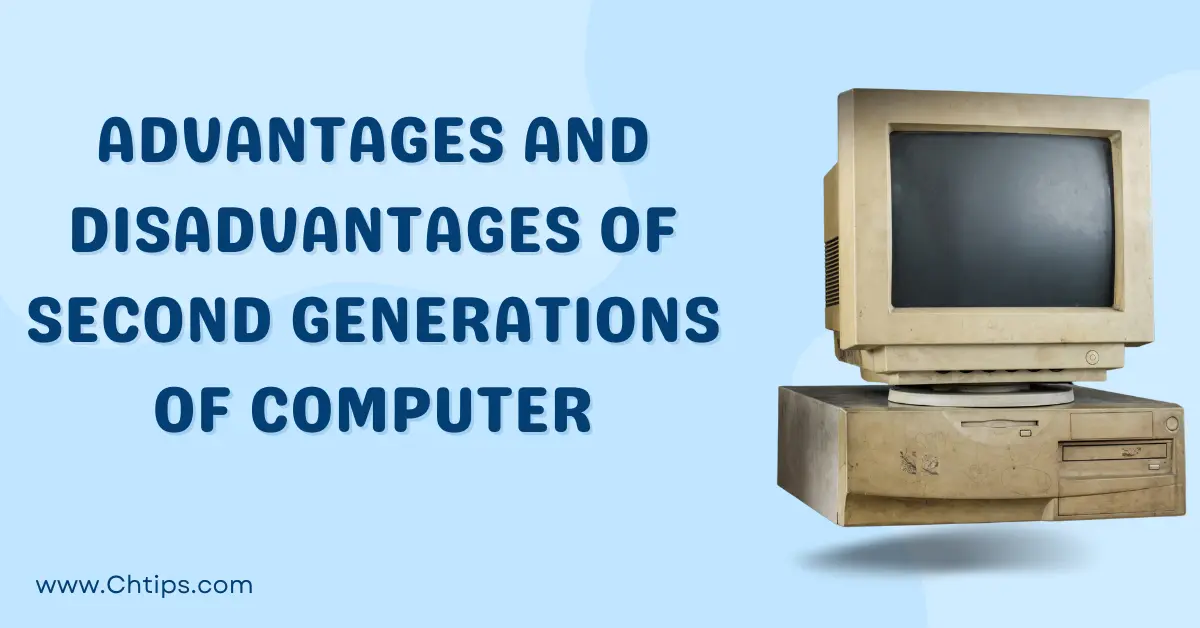The word computer is derived from the Latin word “computare” which means calculating.
Hence, most computers can perform arithmetic and logical calculations with tremendous speed and incredible accuracy.
They do not possess human characteristics like boredom, jealousy, and inefficiency like humans.
Due to the computer’s amazing processing capabilities, it has become a revolutionary device capable of easily handling office work, personal work, and business.
In today’s generation, most work and tasks are performed with the help of the latest computer which has made life more peaceful and enjoyable.
The modern computer has more amazing powers compared to old computers as there are several advantages and disadvantages of second generations of computer, which we are going to learn and discuss in this article.
What are the Second Generations of Computers?
The systematic development of computers with respective software and hardware advancement can be called computer generations.
Five generations of computers are categorized according to their development cycle and processing power.
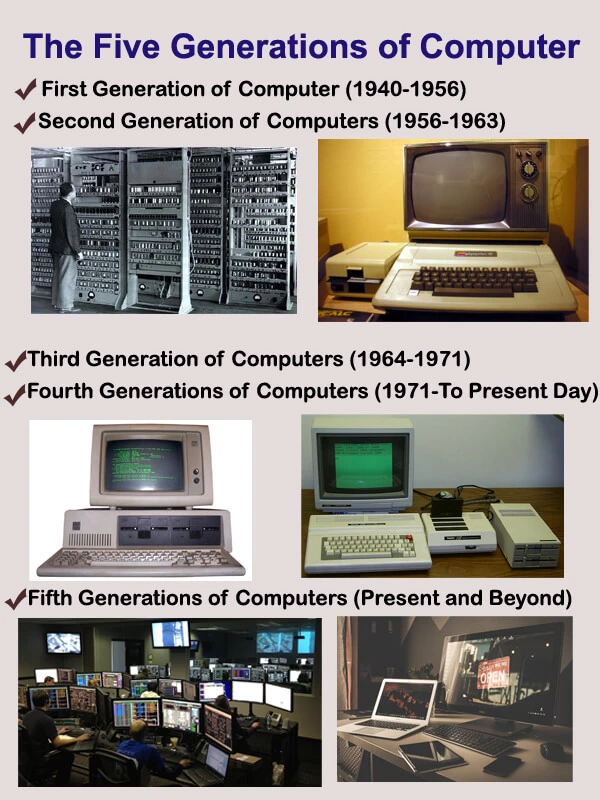
Initially, computers were enormous in size, but rapid development made them more compact and enabled higher processing speed and accuracy.
Older computers were mere calculating devices, but the latest computers are more advanced and can perform more complex tasks and calculations with speed and accuracy.
The computer second generation started in 1956 and ended in 1963. They used transistors in their circuitry, which were comparatively small in size than huge vacuum tubes.
The transistor was designed and developed by Walter Brattain, John Bardeen, and William Shockley on December 23, 1947.
The development of the transistor revolutionized the field of computers.
These transistors were small in size, reliable, and used extensively. The speed of computers increased drastically when using transistors.
These 2nd generations of computers used high-level languages like COBOL and FORTRAN and also were capable of accessing batch programming and multi-programming operating system.
The second generation of computers was utilized used as a part of the industry of nuclear energy, and their examples are
- IBM 7030/7094
- Honeywell 400 Philco
Advantages and Disadvantages of Second Generations of Computer
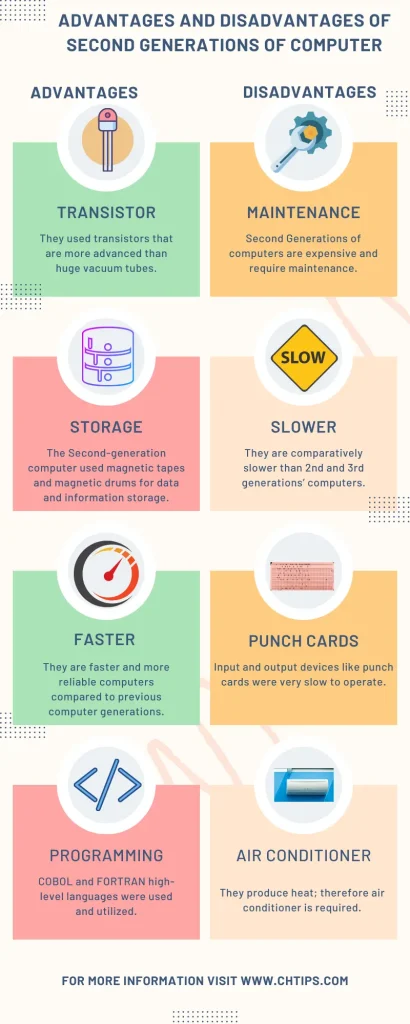
Benefits and Advantages of Second Generations of Computer
- They used transistors that are more advanced than huge vacuum tubes.
- They require less energy compared to the first generation of computers.
- They generate less heat.
- The Second-generation computer uses magnetic tapes and magnetic drums for data and information storage.
- They are faster and more reliable computers compared to previous computer generations.
- They are capable of handling more complex tasks and operations.
- They use high-level programming languages.
- The use of operating systems can be seen in these devices.
- They are compact in shape and size and, therefore, can be installed in small spaces.
- Second Generation computer uses more advanced technology compared to previous computers.
- They were manufactured for commercial use.
- Their processing power was measured in microseconds instead of milliseconds.
- They are less expensive.
- COBOL and FORTRAN high-level languages were used and utilized.
- Used punch cards for input and outputs.
Drawbacks and Disadvantages of Second Generations of Computer
- Second Generations of computers are expensive and require maintenance.
- They produce heat; therefore air conditioner is required.
- They are comparatively slower than 2nd and 3rd generations of computers.
- They are not capable of performing multitasking with rapid speed.
- Due to heat, the hardware device is likely to get damaged.
- Input and output devices like punch cards were very slow to operate.
- They are designed and developed for specific tasks and operations.
- They used magnetic drums and magnetic tapes, which restricted the storage space.
Characteristics of Second Generations of Computer
- The main characteristic of second-generation computers is that they use and utilize transistors compared to the first-generation, which uses vacuum tubes in their circuitry.
- They work with high-level programming languages like COBOL and FORTRAN.
- They are more reliable, efficient, and user-friendly devices compared to 1st generation computers.
- They generated less amount of heat and energy compared to their counterparts.
- They use assembly language.
- They use the printer and operating system for better functionality.
- They are faster and smarter devices than 1st generation computers.
- They are quite inexpensive compared to first-generation computers.
- They have a simple design and are very compact in shape and size.
- Magnetic tape and disks are used as secondary storage. They Use punch cards for inputs and printouts for outputs.
- They have faster processing and execution time and can simultaneously handle multiple operations and tasks.
- They can connect with other computers and devices.
- The magnetic core technology is used for data and information storage.
- They are portable
- Assembly language was used for programming.
- Hardware devices are less prone to failure.
- Manual assembly of individual components into a functional unit was still required.
Examples of Second Generations of Computer
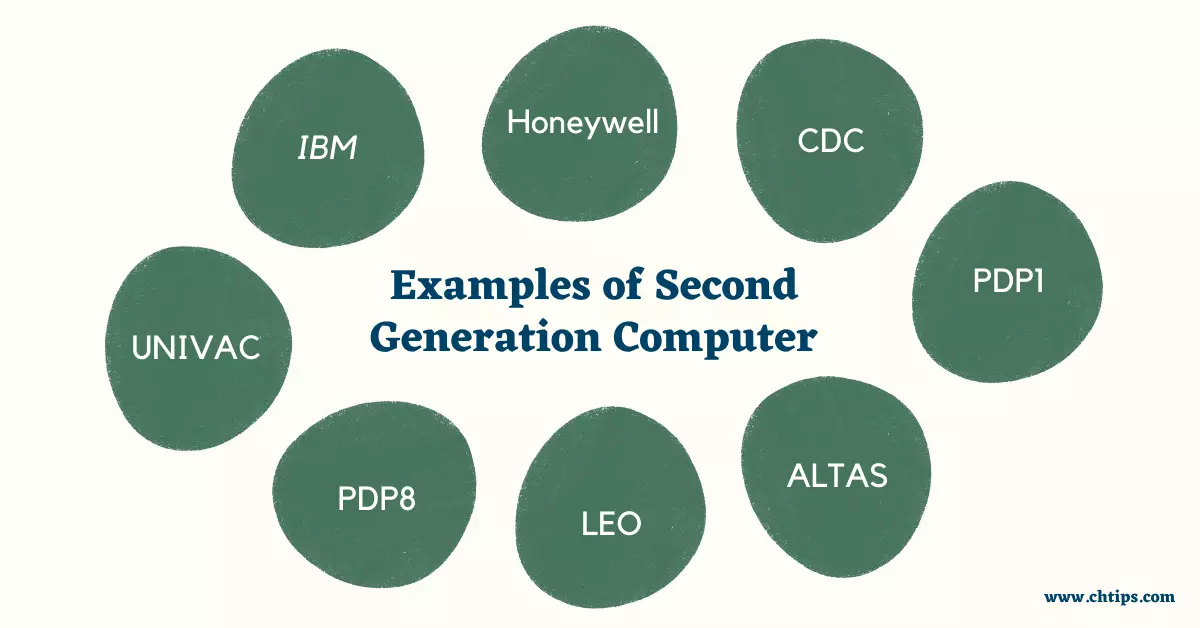
Here are some examples of 2nd generations of computer
- IBM
- UNIVAC 1108
- Honeywell 400
- CDC 1604
- CDC 3600
- PDP1
- PDP3
- PDP5
- PDP8
- ALTAS
- LEO
- PDP (Programmed Data Processor).
All Generation of Computer [1st To 5th]
| # | Computer Generations | Timeline | Hardware |
| 1 | First Generation of Computer | 1940-1956 | Vacuum Tubes |
| 2 | Second Generation of Computer | 1956-1963 | Transistor |
| 3 | Third Generation of Computer | 1964-1971 | Integrated Circuit (I.C.) |
| 4 | Fourth Generation of Computer | 1971-1980 | Microprocessor |
| 5 | Fifth Generation of Computer | 1980- Till Now | Artificial Intelligence |
Difference Between Second (2nd) Generations and Third (3rd) Generations of Computer
| # | 2nd Computer Generations | 3rd Computer Generations |
| 1 | Transistor was used | Integrated circuits (ICs) in place of transistors. |
| 2 | 1956-1963 | 1964-1971 |
| 3 | Magnetic Tapes and Magnetic Drums were used for storing data and information. | rotating hard drives were used as the storage medium. |
| 4 | Punch cards were used as input and output devices. | keyboard, monitor, and printer were used as input and output devices. |
| 5 | Expensive than 3 rd generations of computers | Cheaper compared to second computer generations. |
| 6 | Assembly language was used for programming. | BASIC, COBOL, Pascal, Fortran, C, C++, Perl, and Ada. |
Features of Second Generations of Computer
- The main component used in second-generation computers was the transistor
- Magnetic disks and magnetic tape were used as storage devices.
- The language used in 2nd generation computers was assembly language.
- They were more reliable and faster machines compared to first-generation computers.
- Punch cards were used as input devices.
- They consume less amount of energy.
- They are more compact and can be fitted or installed in small spaces.
- They generated less heat compared to 1st generation computers.
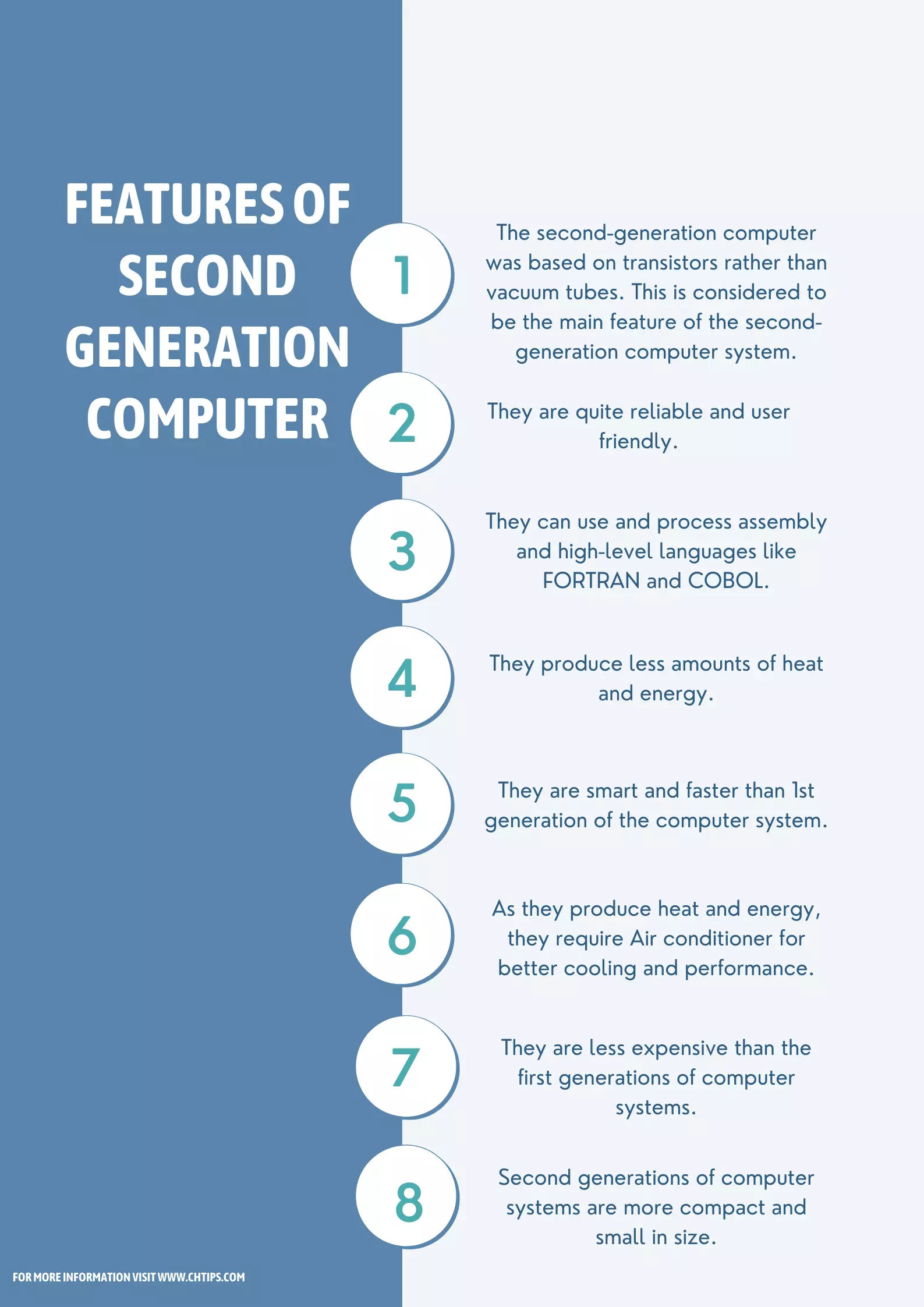
Related Articles
- Advantages and Disadvantages of Computer
- Advantages and Disadvantages of Fifth Generations of Computer
- Advantages and Disadvantages of First Generation Computer
- Characteristics and Features of Third Generation Computer
- 12+ Characteristics of Fourth Generations of Computer
- Advantages and Disadvantages of Fifth Generations of Computer
- What are the Five Generations of Computer System?
- 10 Characteristics and Features of Second Generation Computer
- What are the Five Generations of Computer System?
- 11 Advantages and Disadvantages of Third Generation of Computers
- Fourth Generation of Computers With Characteristics, Advantages, Examples and Uses
- Differences Between Second Generation and Third Generation Computer
- Differences Between First and Second Generation of Computers
- Advantages and Disadvantages of Fourth Generations of Computer
- Differences Between Third and fourth Generation of Computers
- Advantages and Disadvantages of Supercomputers
- Computer Basic Tutorials
2nd Generation of Computer System [Video YT]
Frequently Asked Questions [FAQs]
When was the 2nd Generations Computer Invented?
The second generation was invented in 1959-1965.
Who Invented Second Generation Computers?
Walter H. Brattain (1902-1987), John Bardeen (1908-1991), and William B invented transistors in AT and Bells Lab.
Second Generation of Computer Used?
The 2nd Computer Generation used transistors.
What is the Time Period of the 2nd Generation of Computers?
1950s and 1960s.
Cost of Second Generation of Computer?
Second-generation computers cost about $0.5 million.
What is the Speed of Second Generation of Computer
Second-generation computers had a speed of 10mbps
Which is the Second Generation Language?
Second Generation Computer Used Assembly Language.
Get In Touch
I have also written and compiled some articles on computers and telecommunications, and please go through them.
I hope you will like reading it.
I hope that all the questions and queries related to Advantages and Disadvantages of Second Generations of Computer with Benefits and Drawbacks of 2nd generations of computer have been answered here.
If you have any questions related to the Pros and Cons of the 2nd generation of computers.
Don’t hesitate to contact me, and if you need to add, remove, or update anything from the article, please let me know in the comment section or via email.
I will be more than happy to update the article. I am always ready to correct myself.
I was hoping you could share this article with your friends and colleagues; this motivates me to write more on related topics.
!!! Thank You !!!
